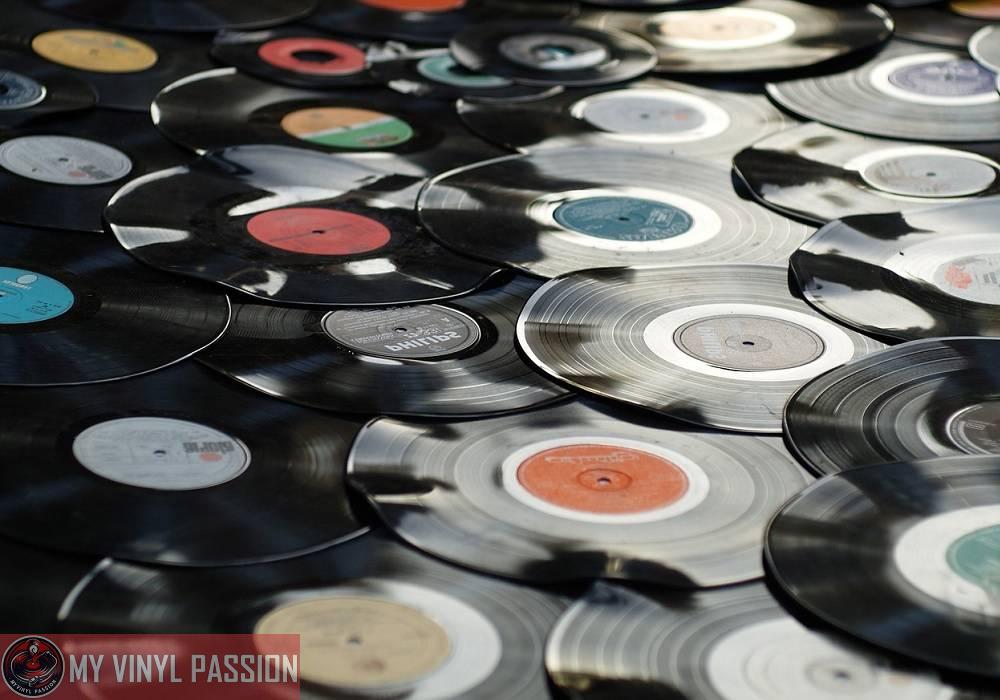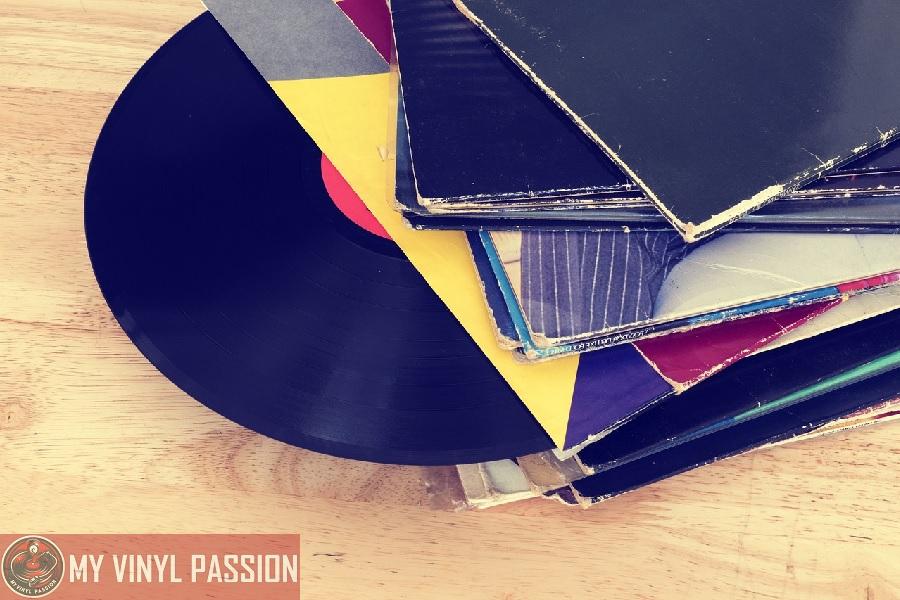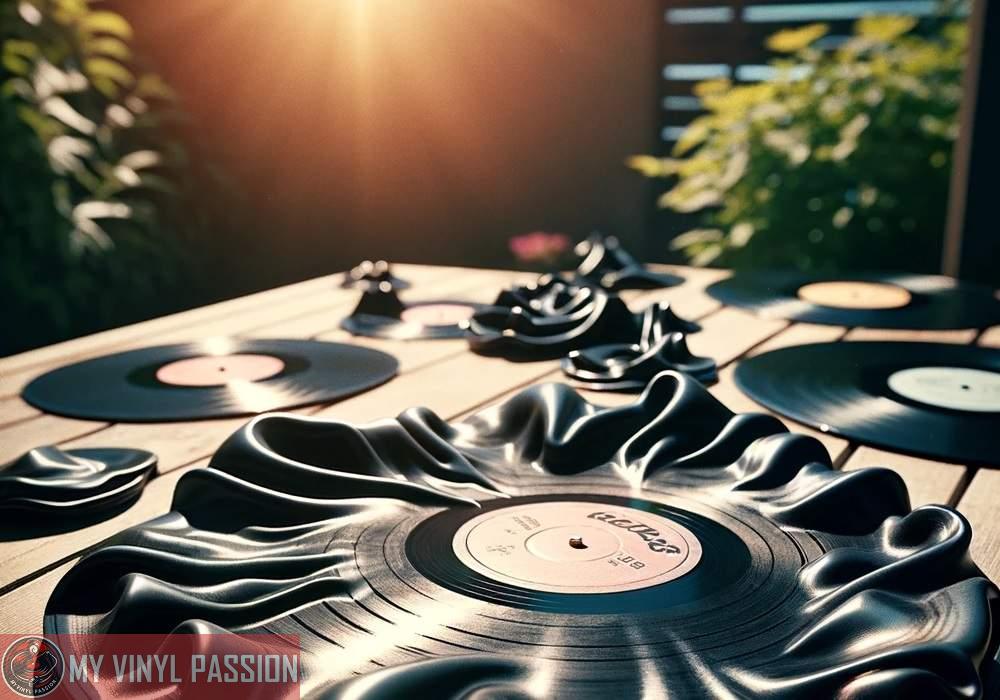Vinyl records have experienced a resurgence in popularity, becoming cherished collectibles for enthusiasts and audiophiles alike.
You might also view them as artifacts of cultural significance that carry a timeless appeal. The long-lasting nature of vinyl records is one of their attractive qualities.
However, this durability raises questions about their environmental impact, particularly whether they can biodegrade after their useful life has ended.
In Summary
Vinyl records are primarily made of PVC (polyvinyl chloride), a type of plastic that is not biodegradable and can persist in the environment for hundreds of years.
Due to their PVC composition, vinyl records contribute to plastic pollution if not disposed of properly, as they do not break down naturally in landfills.
While not biodegradable, vinyl records can be repurposed or upcycled into art, decorations, or other functional items, offering an environmentally friendlier alternative to disposal.
Conventional vinyl records are crafted from polyvinyl chloride (PVC), a type of plastic that is known for its resilience.
This material’s resistance to natural degradation processes poses a challenge for disposal and recycling.
Unlike organic matter, PVC does not easily break down in the environment, which means that vinyl records could potentially persist for decades or even centuries.
While the core material of vinyl records presents barriers to biodegradation, research and discussions on alternative materials and processes reflect a growing awareness of sustainability in the music industry.
Shellac records, for instance, are biodegradable, leading to conversations about viable environmentally-friendly options for physical music formats in the future.
Composition of Vinyl Records
Understanding the composition of vinyl records is crucial because their material properties directly affect their durability and environmental impact.
Materials Used in Production
Vinyl records are predominantly made of polyvinyl chloride (PVC), a versatile and robust plastic. Internal to these records, tiny quantities of ethylene are compounded to achieve the desired flexibility and hardness.
- Polyvinyl Chloride (PVC): The primary constituent of most vinyl records.
- Additives: Stabilizers, lubricants, and additional compounds tailored to improve the manufacturing process and enhance record performance.
Polyvinyl Chloride (PVC) Characteristics
- Chemical Durability: PVC is resistant to oxidation and degradation, contributing to the longevity of your records.
- Physical Properties: This plastic has a high degree of stiffness and rigidity, ensuring the grooves of a record maintain their shape and thus, the integrity of the audio quality.
The PVC material used in vinyl records exhibits strong resistance to natural decomposition processes, meaning your records are designed to last for many years with proper care. However, this durability poses challenges when considering the biodegradability of discarded vinyl plastics.
Environmental Impact
In considering the environmental impact of vinyl records, you should be aware that sustainability concerns, degradation and biodegradability, and the pollution and carbon footprint associated with the production and disposal of vinyl are key issues.
Sustainability Concerns
Vinyl production is not considered sustainable. The main component of vinyl records is PVC (polyvinyl chloride), which relies on fossil fuels for manufacture.
The extraction and processing of these materials require significant amounts of energy, contributing to greenhouse gas emissions. Moreover, while vinyl is recyclable, the actual rates of recycling these records are low due to collection and processing challenges.
Degradation and Biodegradability
Your vinyl records do not biodegrade efficiently, as PVC is a type of plastic that remains in the environment for an extended period. The chloride present in PVC can also lead to the formation of toxic byproducts when vinyl is broken down through processes that are neither natural nor environmentally friendly.
Pollution and Carbon Footprint
The lifecycle of a vinyl record includes extraction, production, and disposal stages, each contributing to pollution and an increased carbon footprint. The manufacturing process emits greenhouse gases, and improper disposal can lead to the release of harmful chemicals into the environment.
But, it’s important to note that digital formats also have environmental costs associated with energy use for servers and devices, but vinyl’s physical nature adds an environmentally damaging aspect due to its material composition and disposal issues.
Effects on Sound Quality and Durability
When you consider vinyl records, two critical factors come into play: the sound quality they deliver and their material durability. Here is what you need to know to evaluate both.
Assessing Audio Fidelity
Vinyl records are renowned for their warm and rich audio quality. The sound fidelity is contingent upon the condition of the grooves where audio information is stored.
Over time, these grooves can degrade from dust, scratches, or repeated play, which may result in audible wear. Additionally, the quality of the turntable, stylus, and the listening environment play pivotal roles in the audio output you experience.
Longevity and Material Resilience
Vinyl records are made from PVC (polyvinyl chloride), which makes them inherently durable and resistant to biodegradation. Proper storage, handling, and cleaning can substantially extend their longevity, preserving the integrity of the grooves and ensuring consistent sound quality.
Although they are durable, vinyl records are not impervious to damage. Exposure to heat, direct sunlight, or heavy pressure can cause warping, which may adversely affect playback quality.
Vinyl Record Lifespan and Care
Caring properly for your vinyl records is critical for their longevity and sound quality. Specific storage and maintenance practices are essential to prevent damage from dust, heat, mold, and improper handling.
Storage and Handling
To ensure the longevity of your vinyl records, you should store them vertically in a cool, dry place away from direct sunlight. The ideal storage environment for your vinyl should maintain a consistent temperature and moderate humidity to prevent warping and deter the growth of mold.
When handling records, it’s vital to hold them by the edges or the label to avoid getting oils from your fingers on the grooves, which can attract dust and cause deterioration.
Proper Cleaning Techniques
Regular cleaning is paramount in maintaining the audio fidelity of your vinyl records. Here’s a brief guide:
- Remove dust particles using a soft, anti-static brush, gently sweeping from the label toward the outer edges.
- For a deeper clean, use a specially formulated record cleaning solution. Apply the solution by following the manufacturer’s instructions, and always use a clean, lint-free cloth.
- Never use household cleaning products or tap water, as they can leave harmful residues or cause damage to the vinyl surface.
Remember, taking the time to properly care for your collection can significantly extend the life and enjoyment of your vinyl records.
The Vinyl Record Industry
In this section, you’ll explore the vinyl record industry’s unique position in today’s market, how records are made, and the effects of digitalization on vinyl.
Market Trends and Consumer Demand
The resurgence of vinyl records has been a remarkable trend, with a noted increase in sales, especially during the pandemic, as consumers sought physical connections to music.
Record Store Day has become a cultural phenomenon, rallying fans to support local stores and exclusive releases. Major labels such as Universal and Warner Music have seen their archives revisited, prompting a blend of nostalgia and new releases on vinyl.
Artists and record labels are responding to this demand. Limited edition pressings and special album reissues cater to collectors and audiophiles who value the tactile experience and rich sound quality of vinyl, traits often missed in the context of streaming.
Manufacturing and Pressing Methods
The process of vinyl production is intricate, involving multiple stages from mastering to pressing. Each vinyl record starts as raw polyvinyl chloride (PVC) pellets before being pressed into discs by vinyl manufacturing companies.
Sophisticated record pressing machinery is essential for maintaining the quality that vinyl enthusiasts expect.
Many record labels and music companies are investing in maintaining the quality of these physical albums. As a result, specialized vinyl industry techniques have been preserved, and even advanced, with modern technology aiding the vinyl manufacturing company in meeting increased consumer demand.
Impact of the Digital Era on Vinyl
The advent of the digital era has presented a paradox for the vinyl market. While streaming has become the dominant mode of music consumption, it has also led listeners to seek out vinyl for a more authentic, naked musical experience.
This has resulted in something of a symbiotic relationship between digital and analog formats.
Despite the convenience of digital, the record industry has found that fans and audiophiles alike yearn for the ritual of playing a record and collecting physical media.
Consequently, major entities such as Universal and Warner Music have capitalized on this trend to enhance their catalogs with vinyl offerings, further cementing the format’s place in the current music market landscape.
FAQs
Are vinyl records biodegradable?
No, vinyl records are not biodegradable. They are made from PVC (polyvinyl chloride), a type of plastic that can take hundreds of years to decompose and does not break down naturally in the environment.
What environmental impact do vinyl records have?
Vinyl records contribute to plastic pollution if not disposed of properly. Since they are non-biodegradable, they can persist in landfills for a very long time, potentially releasing harmful chemicals as they slowly degrade.
Can vinyl records be recycled?
Recycling vinyl records is difficult due to the specific type of PVC used and the presence of mixed materials like paper labels. However, some specialized recycling centers or creative projects may accept them.
What are some eco-friendly ways to dispose of old vinyl records?
Instead of disposing of them, consider repurposing or upcycling vinyl records into art, decorations, coasters, or other functional items. This approach reduces waste and gives the records a new life.
If vinyl records aren’t biodegradable, how should they be stored to minimize environmental impact?
To minimize environmental impact, store vinyl records properly to extend their lifespan: keep them in a cool, dry place, away from direct sunlight, and handle them carefully to avoid damage. This way, they are less likely to end up in landfills.





